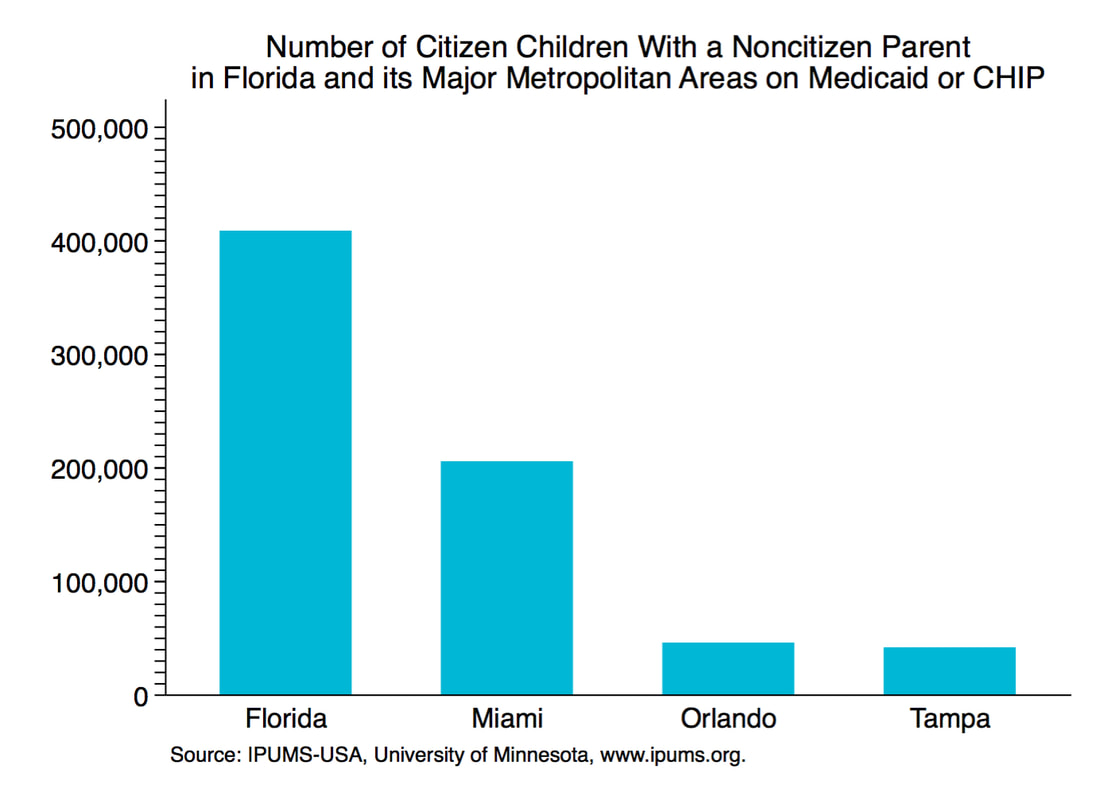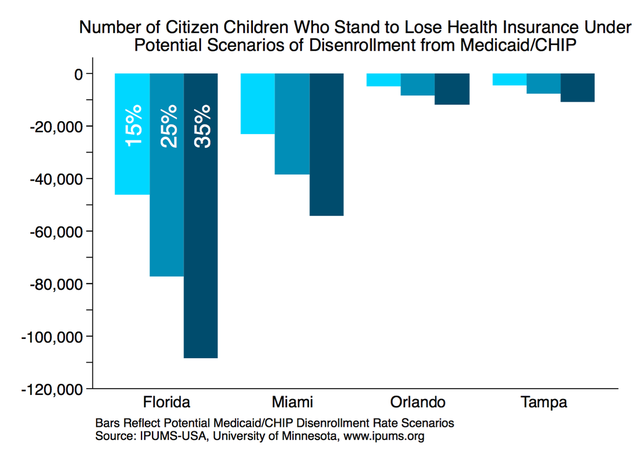 Pursuant to a draft rule now being considered by the Trump Administration, the federal government would, for the first time, consider use of virtually any publicly funded benefit intended to safeguard the health, nutrition, housing and economic security of America's low income families in making public charge determinations. The range of benefits that could be considered would include Medicaid, CHIP, marketplace subsidies, SSI, state and local government cash assistance programs, public assistance for long- and short-term institutionalized care, state and local subsidized health insurance, WIC, SNAP, LIHEAP, transportation vouchers, public housing assistance, and educational benefits like Head Start. This represents a major shift from long standing policy in which the only benefits considered in a public charge determination (which could result in denial of lawful permanent residence or entry to the U.S.) are cash assistance or long term institutional care. The Administration's stated intent is to “provide a strong disincentive for the receipt or use of public benefits by aliens, as well as their household members, including U.S. children.” [1] This brief estimates the potential loss of one particular benefit on a single subset of the potentially impacted Florida population-- citizen children in Florida currently enrolled in Medicaid/CHIP. Decreased Enrollment in Medicaid/CHIP Among Florida’s Eligible Children. Lawfully present immigrants eligible for Medicaid or CHIP, as well as citizen children with one or more immigrant parents, are already far more likely to be uninsured than those without immigrant family members based on currently (unfounded) fears of negative immigration consequences.[2]If the draft rule goes forward, this disparity will grow as the new rule explicitly intends to have a chilling impact. The implications for loss of coverage among Florida's children--particularly in South Florida-- are significant. The universe of those impacted is larger than the data provided in this brief because, among other things, significant numbers of eligible children are not currently enrolled, and, as a result of the new rule, their parents will likely not pursue enrollment. According to the 2016 American Community Survey, there are currently over 400,000 citizen children in Florida who are enrolled in Medicaid or CHIP with a non-citizen parent.[3]As illustrated in the graph below, half live in the Miami metropolitan area (Miami-Dade, Broward, and Palm Beach Counties). Miami-Dade County Will Be Disproportionately Impacted Miami-Dade County will be disproportionately impacted by the new rule as it is not only the most populous county in Florida, but more immigrants reside there than any other part of the state. Almost 60% of its residents are foreign-born and 28% are noncitizens. Of the 400,000 citizen children on Medicaid or CHIP with a noncitizen parent, 27% live in Miami-Dade County (approximately 109,000), which is more than twice as high as its neighboring counties to the north. Broward County has 13% of the statewide total (approx. 55,500) and Palm Beach County has 10% of the statewide total (roughly 40,200). Consequently, Miami-Dade County will see more children lose health insurance than Broward and Palm Beach Counties combined. Using the same disenrollment rates that we previously used, the number of children losing insurance in Miami-Dade County will fall between 12,200 and 29,000. Broward County will see losses in the range of 6200 to almost 14,500 while we could see between 4,500 to 10,500 children losing health insurance. Note: The number of citizen children whose coverage would be adversely impacted under the draft rule is significantly higher than the data above since this analysis does not include an estimate of the children who are currently eligible but not enrolled. For more information, please visit the Protecting Immigrant Families website. If you have any questions, please contact Miriam Harmatz, [email protected]or Matt Childers, Ph.D., at [email protected] If the rate of disenrollment ranges from 15 to 35% among these families, between 46,000 and 107,000 children will lose insurance across the state.[4]The graph below compares the impact in each of the state’s major metropolitan areas to the impact statewide. Again, half of all the children who will be affected by the rule live in greater Miami. [1]Samantha Artiga, Anthony Damico, and Rachel Garfield, “Potential Effects of Public Charge Changes on Health Coverage for Citizen Children,” Issue brief (Washington, D.C.: Henry J. Kaiser Family Foundation, May 18, 2018), https://www.kff.org/disparities-policy/issue-brief/potential-effects-of-public-charge-changes-on-health-coverage-for-citizen-children/.
[2]Ibid. [3]Steven Ruggles et al., “IPUMS USA: Version 8.0 [Dataset].” (Minnesota Population Center, University of Minnesota, 2018), https://doi.org/10.18128/D010.V8.0. [4]75% of these children would become uninsured because Medicaid or CHIP was their only insurance option. See the methods section in Artiga, Damico, and Garfield, “Potential Effects of Public Charge Changes on Health Coverage for Citizen Children,” for more information. Comments are closed.
|
Sign-up For Email Updates |
The Florida Health Justice Project, a nonprofit organization, recognizes that access to quality and affordable health care is a human right and engages in comprehensive advocacy to expand healthcare access and promote health equity for vulnerable Floridians.
A COPY OF THE OFFICIAL REGISTRATION AND FINANCIAL INFORMATION MAY BE OBTAINED FROM THE DIVISION OF CONSUMER SERVICES BY CALLING TOLL FREE WITHIN THE STATE AT 1-800-435-7352 . IT CAN ALSO BE FOUND AT WWW.800HELPFLA.COM. REGISTRATION DOES NOT IMPLY ENDORSEMENT, APPROVAL OR RECOMMENDATIONS BY THE STATE.
|









